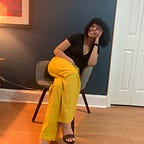Robin is Bisexual!
A Look at Sexuality in the Comic Book World
Robin, Batman’s sidekick, has come out as bisexual in a recent comic, causing a fury of excitement across communities. This is how the comic book scene plays out:
“At Bernard’s door, Drake stammers, “I’m really glad you got home okay. I was relieved. And I’ve been doing a lot of thinking about that night. And I — I don’t know what it meant to me. Not yet. But I’d like to figure it out.”
Bernard responds, “I was hoping you would. Tim Drake … do you want to go on a date with me?”
“Yeah, I think I want that,” Robin answers — thus concluding the episode until the next, coming in December.”
The Batman and Robin franchise is huge, and it has been around since the 1940s. In other words, it was a time where being gay wasn’t spoken about in the open.
“But gay subtext managed to insinuate itself into the Dynamic Duo’s dyad from the very start. The opening page of Robin’s debut story in the April 1940 issue of Detective Comics №38 featured an introductory scroll jammed with breathless declamatory copy about “THE SENSATIONAL CHARACTER FIND OF 1940 … ROBIN, THE BOY WONDER!”
Not that the writers of Batman and Robin would admit the gay undertones, though, because the superheroes were manly men.
They did “man” things. They took on crime, defeated the bad guy, and got the girl (or girls) because that is what men did. You can see this in other comics, too, like Superman and Captain America. Each a manly man written by a man who wanted to dream he was the manliest man of them all.
There seemed to be no room for superheroes to be gay. Even so, both Batman and Robin have been the butt of gay jokes for years and years. So much so that it’s common to see fan fiction writers take the DC superheroes and present them as proud members of the LGBT community.
“Remember: Queer readers didn’t see any vestige of themselves represented in the mass media of this era, let alone its comic books. And when queer audiences don’t see ourselves in a given work, we look deeper, parsing every exchange for the faintest hint of something we recognize. This is why, as a visual medium filled with silent cues like body language and background detail, superhero comics have proven a particularly fertile vector for gay readings over the years.”
Queer fans shouldn’t be put in this position. Implying that we have to read between the lines to find even remnants of LGBT characters is like hiding in the closet with little to no hope of coming out.
The first openly gay superhero was in Marvel Comics in the 1990s. His name, Northstar. Which I didn’t even know until I did my own research. For years, I thought the American comic book universe was ultimately straight with gay undertones and women hindered by the “male gaze.”
The male gaze is often associated with how men sexually see women. Hence, we have strong female characters like Wonder Woman and Catwoman with little outfits and unrealistic fight stances showing off their “assets.” But I think it can also be used in relation to how men see themselves. In essence, how men can build themselves up to be like Batman or even Robin.
I mean, Batman and Robin aren’t like SuperMan. Batman doesn’t have laser eyes or come from another planet. He is a human with money, and Robin is something of a best friend or little brother. In other words, something that isn’t too far-fetched for average males reading about their adventures.
Men could really be Batman, a jacked, wealthy, “good guy,” just like they could be Robin. It has to be why Batman has been around so long; their look can change, but the bones remain. The character has changed with the times from “dad-bod” 60s Batman to lean and muscular Christain Bale Batman. Batman physically changes with time (which also corresponds to male body expectations, but that’s a different conversation).
If the characters can change looks, why didn’t the gay undertones of the comic come out, say in 2015 when gay marriage was legal in the U.S? I don’t know, but it’s finally happening in 2021, and the fans straight and queer alike are in full support.
The comic and Robin’s coming out reflects today’s world, and it’s bound to have a lasting impact as media (no matter the form) influences people.
Time and time again, studies show that superheroes have affected their readers. Rather it is finding solace in one or using them as inspiration for your next Halloween costume. Fictional characters hold a special place in fan’s hearts, especially as a way for them to escape reality. But in my opinion, comics can be escapist, but they still reflect real-world problems of real people.
In short, if comics take from the real world, where is the LGBT community? Luckily, the community has been shined on in the past years with major characters like Loki from the MCU and Robin from the DC Universe.
But before Loki (who is arguably very important right now because of his strong presence on-screen) and Robin, there were other LGBT superheroes like Deadpool, Harley Quinn, Constantine,Hulkling, Wiccan.
So I guess there is no shortage per se of queer superheroes. They just aren’t talked about as often as their straight counterparts. But with the coming out of Robin and all the attention that Loki (and Mobius) is getting from the mainstream, it seems to be opening their doors for everyone.
